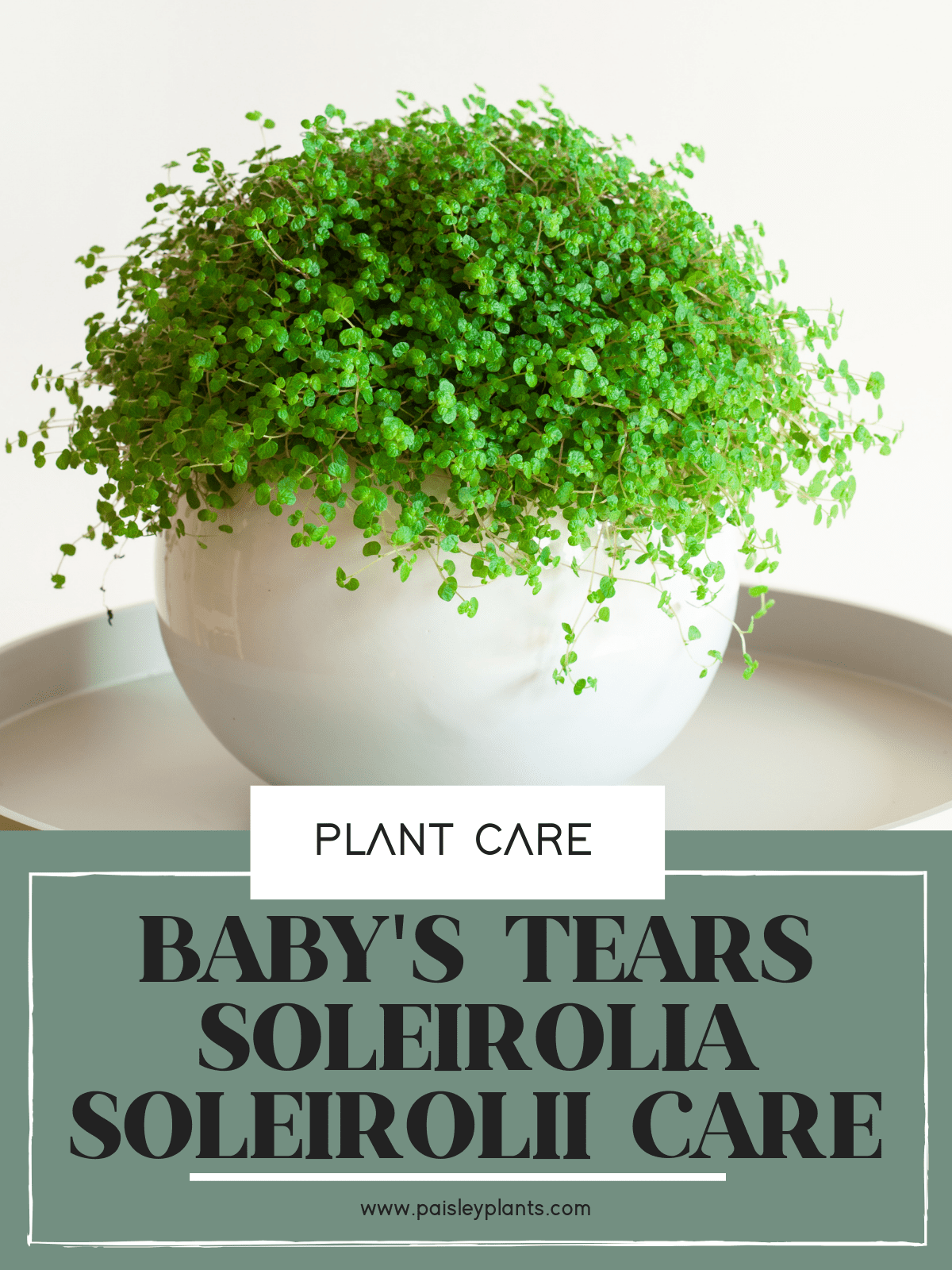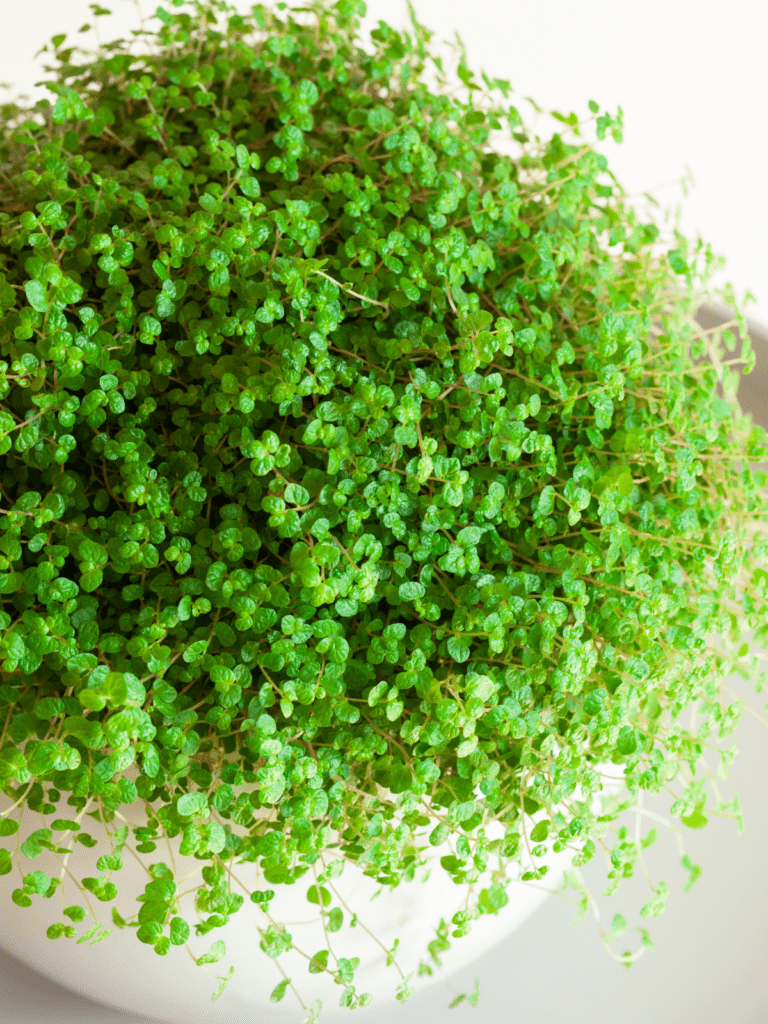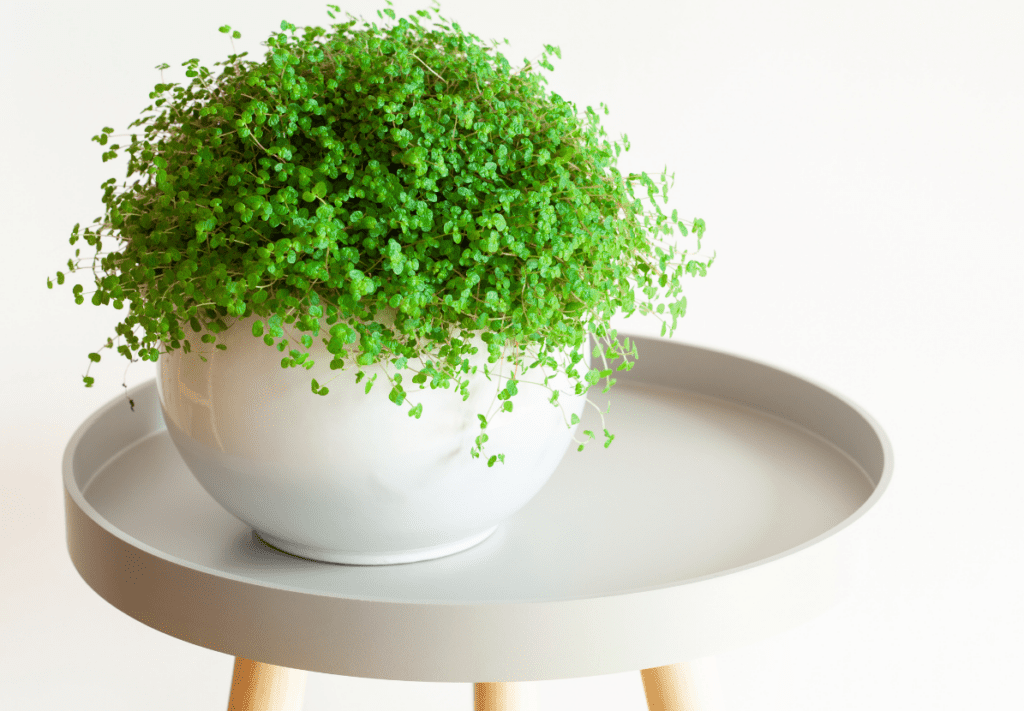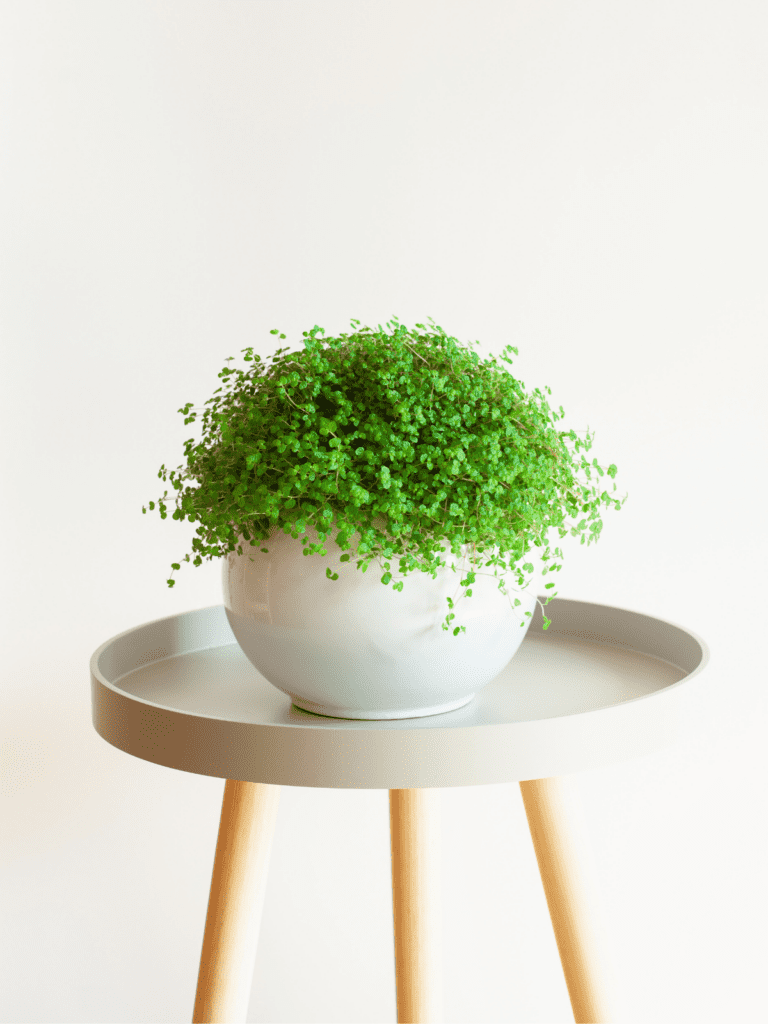Beautiful, lush, and the perfect addition to both indoor and outdoor gardens, the baby’s tear plant is unlike any other. While baby’s tears often get a reputation for being finicky houseplants, this is simply not the case.
Baby’s tear plants require close attention, yes; but they are by no means a difficult plant to care for. Read on for this ultimate care guide!

Table of Contents
Baby Tears Plant (Soleirolia soleirolii) Background
Native to the warm, tropical climates of the Mediterranean, the baby’s tears plant (Soleirolia soleirolii) is a perennial plant that is beloved by many gardeners for its dense, yet delicate mat of foliage.
In warmer climates (USDA zone 9-11), you’ll find baby’s tears grown as a ground cover for gardens because of its dense growing pattern. Outside of its hardy regions, the Soleirolia soleirolii can be grown as an indoor houseplant, either in a terrarium or a hanging planter.
Besides baby’s tears, the Soleirolia soleirolii has a ton of common names, including angel’s tears, Corsican carpet, and paddy’s wig.
If you’re growing baby’s tears inside the home, you can be rest assured this is a safe plant to be around your pets and small children. The baby tears plant is non-toxic.
Baby’s Tears Plant Care & Grow Tips

Sun & Light
These plants have a strong disdain for intense, direct sunlight. Rather, baby tears prefers to live in shadier locations.
Aim to provide your plant bright, yet indirect sunlight if growing your plant indoors. For outdoor growers, try to place your plants near a shady location, such as under a tree or the awning of a house.
Soil Type
Baby’s tears prefers a slightly acidic soil that is rich in organic matter. Materials such as humus, compost, and manure are excellent choices to include in a soil tailored for Soleirolia soleirolii.
In addition, these materials are especially helpful in maintaining a consistently moist soil for your plants.
Water
Baby tears plants enjoy a consistently moist soil, so regular watering is key to keeping a healthy plant. These houseplants tend to be dramatic and wilt as soon as their soil gets too dry for their tastes. Indoor baby tears can withstand a drier soil during the winter months (when the plant is not actively growing).
On the flip slide, it is important to ensure your plant is not sitting in waterlogged soil, which is an easy error to make especially with baby’s tears.
Fertilizer
Fertilizer should be regularly applied to your plant every two weeks during the spring and summer seasons. Select a balanced, liquid fertilizer to apply to your baby’s tears.

Temperature & Humidity
The baby’s tears plant enjoys warm, humid climates, similar to their native Mediterranean habitat. If growing your baby’s tears outdoors, make sure your air temperatures can reach at least 50° to 70° F and you live in a hardy zone between 9 to 11.
Baby’s tears absolutely adore humidity, so try your best to aim for 75% humidity for your plant. I suggest placing your baby’s tears in locations of the house that have the highest humidity levels such as bathrooms or kitchens.
You can also opt to purchase an air humidifier to make your plant nice and comfortable. Many plant owners house their baby’s tears in a terrarium for the high humidity levels in a terrarium.
Choosing a Container & Repotting
While baby’s tears are often grown as ground covers, they fare very well when grown indoors in containers. Many plant owners like to place their baby’s tears in a hanging planter, where their thick foliage is able to freely drape over the edge of the planter.
Baby tears plants are rapid growers and will need to frequently be repotted in order to keep them comfortable. I recommend repotting your plant yearly. Gradually size up your planter every year, selecting a pot that is only 1 to 2 sizes larger than the previous.
When transferring your baby’s tears into a new pot, please keep in mind that their root system is very delicate and can be easily damaged if handled improperly. Instead of pulling the plant up by its foliage, turn the plant pot on its side and gradually coax the plant out from its pot.
Pruning & Maintenance
While pruning is not usually a requirement when caring for your outdoor baby’s tear plant, it is very helpful in maintaining the aesthetic of the plant, as well as encourage new foliage growth.
Baby’s tear plants that are grown in terrariums should be pruned back regularly, as they have a tendency to overtake smaller plants in enclosed spaces. Remember to always use sharp, sterile equipment when pruning your baby’s tear plants.
I like to start by pruning any dead or damaged foliage before moving onto the healthy growth. By removing any unnecessary foliage, you’re redirecting your plant’s energy and encouraging it to grow new foliage; rather than wasting its energy on keeping damaged branches alive.
How to Propagate

Baby’s tear plants can be easily propagated to create more plants for your garden. The two most popular methods of propagation for baby’s tear plants are division and stem cuttings. Let’s take a look at how to propagate baby’s tear plants step-by-step:
Propagation via Division
- First, you’ll need to start with a clean, sharp garden trowel. Depending on whether you’re going to grow an outdoor or indoor plant, have a plant pot or a dedicated growing area on standby.
- Using your trowel, dig into your plant and separate sections of stem and soil with the roots still intact.
- Repot your division in a location with moist, well-draining soil. Care for your plant and make sure to maintain an even soil moisture to help mitigate the risk of transplant shock.
Propagation via Stem Cutting
- First, assemble your pruning shears, a planter filled with fresh potting mix, and (optional) hormone rooting powder.
- Cut off a healthy stem from your baby’s tear plant that is at least 2 inches in length. Cut off the bottom leaves, only leaving a few leaves at the top.
- (Optional) Dip the cut-end of the stem in a solution of hormone rooting powder and water. This will heighten the chances of a successful propagation.
- Bury the cut-end of the stem in the potting soil, allowing the leaves to remain above the soil for airflow.
- Cover the pot with a plastic bag to keep the soil moist.
- It takes about 3 to 4 weeks for new growth to appear. Another helpful way to check if your stems have rooted is to give the stem a gentle tug. If the stem has any resistance, then that means it has established roots in the soil.
Pests
Baby’s tear plants can be susceptible to common houseplant pests such as aphids and fungus gnats. And while these pests are a nuisance to have around, there are many different ways to control their presence.
Aphids can be sprayed away by dousing your plant with a strong stream of cool water; aphids are very weak insects and the water is enough to dislodge them and prevent them from climbing onto your plant again. In addition, during the aphids with all-purpose flour will constipate the insects.
Fungus gnats can be controlled by strategically placing yellow sticky tape around your plant; I like to place my tape on the surface of the soil.
Both fungus gnats and aphids can be treated by spraying your plant with a natural horticultural oil (such as neem oil, for example). All-purpose insecticidal sprays and soaps will also work wonders in keeping pests off your plants.
Diseases
While baby tears plants enjoy a soil that is consistently moist, they do not like a waterlogged, soggy soil. This is an easy mistake that gardeners make, but it can come with some serious consequences. Root rot is a fungal disease that affects plants whose roots have been sitting in water for too long.
Symptoms of root rot include yellowing and wilting foliage. Though root rot can be scary, it can be treated if caught early enough. Here are some steps to treating root rot:
- Remove your plant from its container. Clean out and disinfect the container.
- Take your pruning shears and cut any of the black, dead roots and prune any dead leaves from your plant.
- Repot your baby’s tears in a clean pot with fresh soil. Lightly moisten the soil.
While root rot is treatable, the best option is to prevent root rot from ever happening in the first place. Always make sure to keep your plant’s soil moist, but never waterlogged. If you’re growing baby tears in a container, please ensure that there is at least one drainage hole in that container so that excess water can flow from the drainage hole.
Where to Buy
Baby’s tear plants require some TLC, but I’m sure you’ll find that they are a lovely plant to own. You can use them as a lush ground cover outdoors, or keep your plant indoors as a beautiful hanging plant. Either way, I’m sure you’re going to love your new baby’s tear plant!
Head here for more pet friendly houseplants!

